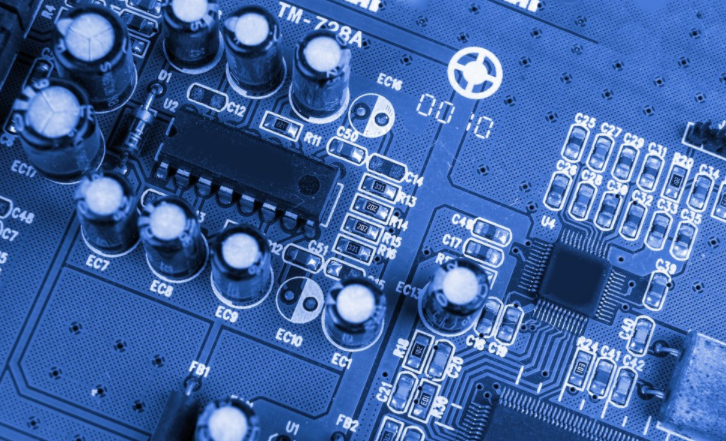
Three typical PCBA circuit board temperature curves
It is generally divided into three categories: three angle temperature curve, peak temperature curve of heating and insulation, and low peak temperature curve.
(1) Triangular temperature curve sustainable for simple PCBA products
For simple products, since PCB is easier to heat, the temperature of components and PCB is relatively close, and the temperature difference on PCB surface is small, so three-angle temperature curve can be used.
When the tin sheet formula is correct, the 3-corner temperature curve will produce brighter solder joints. However, the starting time and temperature of the flux must adapt to the higher melting temperature of lead-free solder paste. The heating rate of the 3-angle curve is controlled as a whole, generally 1-1.5 degrees. Compared with the traditional peak curve of heating and insulation, the energy consumption is lower. This type of curve is generally not recommended.
(2) Recommended peak temperature curve of temperature rise and insulation
Circuit board

The peak temperature curve of temperature rise and insulation is also called the tent curve. The figure shows the recommended peak temperature curve of temperature rise maintenance (the same as Figure 1), where curve 1 is the temperature curve of Sn37Pb solder, and curve 2 is the temperature curve of lead-free Sn Ag Cu solder paste. It can be seen from the figure that the limit temperature of components and traditional FR4 printed boards is 245 ℃, and the process window of lead-free soldering is higher than Sn-37Pb.
It's much narrower Therefore, lead-free soldering requires slow heating, full preheating of PCB, and reduction of PCB surface temperature difference - to uniform PCB surface temperature (235~245 degree Celsius) to avoid damage to the equipment and FR-4 base Data PCB Requirements for peak temperature curve of temperature rise and insulation are as follows
1. The heating rate should be limited to 0.5 1 ° C/s or less than 4 ° C/s, depending on the solder paste and components.
2. The formula of flux composition in the solder paste shall conform to the curve. Too high insulation temperature will damage the efficiency of solder paste.
3. The second temperature rise slope is located at the entrance of the peak area. The typical slope is 3 ° C/s above the liquidus, requiring 50-60s, and the peak temperature is 235-245 ° C.
4. In the cooling zone, in order to avoid the growth of crystalline particles and segregation in the solder joint, it is required to cool the solder joint rapidly, but special attention should be paid to reducing the stress. For example, the maximum cooling rate of ceramic chip capacitors is - 2 to - 4 ° C/s.
(3) Low peak temperature curve
The low peak temperature curve means that the first step is to add slow heating and full preheating to reduce the PCB surface temperature difference in the reflow area. The direction of large parts and large heat capacity usually lags behind the peak temperature of small parts., Figure 3 is a schematic diagram of the low peak temperature (230-240 ° C) curve. In the figure, the solid line is the temperature curve of small parts, and the dotted line is the temperature curve of large parts. When the small parts reach the peak temperature, stick to the low peak temperature and wide peak torque, and let the small parts wait for the large parts; Wait for the large parts to reach the peak temperature and hold for a few seconds before cooling. This measure can prevent damage to the meta equipment.
The low peak temperature (230, 240 ℃) is close to the peak temperature of Sn-37Pb. This equipment has low risk of damage and low energy consumption; However, PCB layout, thermal design, adjustment of reflow process curve, process control and equipment all have high requirements for horizontal temperature uniformity. The low peak temperature curve is not applicable to all products. In actual production, the temperature curve must be set according to the specific conditions of PCB, components, solder paste, etc. The disordered circuit board may require 260 ℃.
After studying the surface mount welding theory, it can be seen that the welding process involves physical reactions such as water, viscosity, capillary phenomenon, heat conduction, diffusion, dissolution, and chemical reactions such as flux decomposition, oxidation, and recovery It also involves metallurgy, alloy coating, and gold Stage, aging, etc, It was a very chaotic process During SMT placement, it is necessary to use welding theory to correctly set reflow welding temperature curve In PCBA production, correct process methods must be mastered and process control must be carried out to make SMT complete After printing solder paste, the qualification rate of shape memory alloy shall be determined, and the component equipment shall be installed and finally completed from the reflow soldering furnace Zero (no) defects or The quality of reflow soldering close to zero defects also requires all solder joints to reach a certain mechanical strength. Only such products can achieve high quality and high reliability






